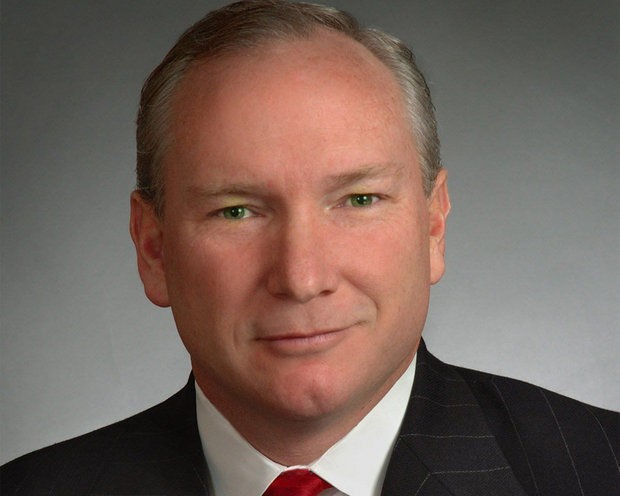Is your 401(k) ripping you off
Post on: 6 Апрель, 2015 No Comment

FORTUNE – If youre a typical 401(k) investor, perhaps you check your account now and then to see how your investments are doing. Or maybe you just let them ride. One thing is almost certain: You dont know how much youre paying in management fees. Were not saying that because its human nature. (Though it is.) Were saying it because until now its been almost impossible for a regular person to monitor.
Thats about to change. Thanks to a new rule issued by the Labor Department, later this summer investors will begin receiving reports that for the first time detail all the fees they are being charged by their 401(k) plan providers. Every investor must receive an initial report by Aug. 30. Its a landmark moment that should go a long way toward maximizing the nest eggs of regular savers.
The disclosures will offer 401(k) investors, who collectively control more than $3 trillion, the chance to see what until now has been buried in additional statements or 200-page government filings. The simple fact is, many 401(k) plans are much too expensive. The average investor is charged 0.83% of assets annually. (In small plans its often much more, as high as 3%; in large plans, a little less.) Some plans tack on additional wrap fees of up to 1% of your assets. Then there are the mutual funds inside the 401(k)s. Many plans only offer funds that charge fees of 1.5% or more far higher than the 0.77% median fee for stock funds. Consider this jarring figure: An ordinary American household with two working adults will cough up almost $155,000 in 401(k) fees over a lifetime, according to the think tank Demos. Says Edward Siedle, a former SEC lawyer who now runs a pension and 401(k) research firm: 401(k)s are leaking money like a sieve.
For investors who havent been paying attention, the disclosures will be all the more startling. AARP recently asked 800 workers with 401(k)s what they thought they paid in fees. A stunning 70% responded that they werent being charged anything. That figure is more believable when you consider that the typical 401(k) investor is the opposite of a day-trading CNBC junkie: He or she is 45, has an average of $60,000 in his or her account, and has little investing experience outside of retirement savings.
The new transparency in fees is bound to drive down costs and cause a shakeout following the recent examples of the credit card and fast-food industries. When excessive charges or high calorie counts are exposed, they eventually fall. What were talking about is this incredible fee-reduction opportunity, says David Wray, president of Plan Sponsor Council of America, a consortium of 1,200 companies with 401(k) plans. He says that over the past two years nearly 60% of companies have changed their 401(k)s in one way or another, six times the usual rate of change. Companies have begun cutting high-cost options before their employees receive disclosures in the mail, Wray says. At the same time, thousands of independent advisers who can run 401(k)s at a lower cost are now hunting for business. You have all these advisers out there trolling for plans, he says. A fee revolution is brewing.
Dimensional Fund Advisors is one heavyweight 401(k) provider thats expecting to cash in on the new transparency. Its going to be one of our main engines of growth, says David Booth, co-chief executive of the index fund giant. Booth is talking in a gleaming conference room in Dimensionals vast new headquarters in Austin that offers both far-off views of downtown and a not-so-subtle reminder that low-cost money management can pay off big-time.
When Booth co-founded Dimensional 30 years ago, he was heavily influenced by the lessons he had learned at the University of Chicago about efficient-market theory, which argues that individuals have little chance of outperforming the stock market over long periods. That means their best chance of beating their neighbors is to pay less to own stocks. By selling index funds that charge an average 0.31% in fees through a network of 2,600 advisers, Dimensional in theory gives clients that chance. Theyve responded. Dimensionals assets have skyrocketed to $250 billion, from just $30 billion in 2002. And Booth says the new industry focus on fees has already begun to drive more business his way. The companys 401(k) group attracted a record $350 million in January. Dimensional expects the division to triple its $18 billion in assets over the next five years.
But its another story for companies peddling high-cost plans. Up to half of the 401(k) market may undergo significant changes. Says Ryan Alfred, co-founder of 401(k) and financial adviser research firm BrightScope: The industry is shaking in their boots.
Disclosure is one way to address a problem thats been growing in retirement accounts for years. The 401(k) came into existence in the late 1970s. It was originally created as a way to offer tax-deferred compensation to executives and was named for the new section of the tax code. Its popularity swelled in the roaring bull market of the 1980s and 90s. During that time American companies steadily cut traditional defined-benefit pensions in favor of defined-contribution 401(k) plans. Now more than 60 million Americans have one, compared with just 8 million in 1984.
Today the U.S. 401(k) market is roughly split down the middle between the haves and have-nots. The large Fortune 500 companies and their thousands of employees make up about half of the $3 trillion market. Theyre the province of giant, low-cost providers like Vanguard, T. Rowe Price TROW. and Charles Schwab SCHW. Insurance companies, armed with tens of thousands of brokers, dominate the other half smaller businesses like automobile dealerships, dentists offices, and law firms. Thats where some of the most excessive fees exist. Unlike, say, Vanguard, which sells plans from its headquarters, insurance companies rely on their brokers to bring in new business. Those brokers work on commission. That means that they have an incentive to push mutual funds with higher fees and thus, fatter margins from which to pay commissions instead of the best or lowest-cost funds for investors.
Take the Des Moines insurer Principal Financial Group PFG. which manages $364 billion, including a large retirement division with a suite of its own funds. Included is one called the LargeCap S&P 500 index PLPIX. Under a plan offered by Vanguard, an S&P 500 index fund might charge 0.15%. Under Principals plan, not only do 401(k) investors pay the 0.15%, or 15 basis points, but they could also pay an additional 0.35% for a marketing charge known as a 12b-1 fee, plus other expenses that add up to an annual 1.04% expense ratio. Some Principal clients are even charged an extra 0.50% for whats commonly called a wrap fee another all-purpose management expense. Before long, a plain old index fund can cost upward of 1.50% a year or 10 times as much as it might through Vanguard. Principal responds that the higher fees allow it to offer more personalized education to investors in its plan. Plan sponsors who want our level of quality, service, and longtime commitment recognize the value they get for the dollar spent, says a Principal spokeswoman.
Around 2005, U.S. Rep. George Miller (D-Calif.) started hearing small businesses in his Northern California district complain about their 401(k)s. Miller, a key advocate of President Obamas health care overhaul, asked Congress investigative arm, the Government Accountability Office, for its opinion on 401(k) fees. By 2006, he got the answer he was expecting: GAO found that companies had no idea if they were offering the best funds, employees had no way to compare the different options, and both were probably being charged too much. Unjustified fees represent a reduction of 25% to 27% of someones savings over their working life, says Miller.
U.S. Rep. George Miller and one of his pies
Miller introduced legislation requiring fees to be disclosed in 2007. But the bill went nowhere under Bushs waning presidency. Obamas health care reform then consumed Congress attention. A new bill finally came to a vote and passed the House in 2010, but died in the Senate. Miller made a big show of the dismissal, sending 23 pies to Senate committee offices, each with a big slice missing to represent the portion of 401(k) assets lost to excessive fees.
After it became clear that Millers bill was doomed, regulators at the Labor Department took the lead. The department proposed a new disclosure rule in the fall of 2010. Before the rule was finalized in February, however, financial lobbyists spent two years trying to reduce its effectiveness. They are billion-dollar businesses, and were a fly on the wall, says a congressional aide who followed the process closely.

The rule is far from perfect. Plan providers are required to disclose fund expense ratios by far the largest cost in a 401(k) only in annual statements, not in quarterly updates. Even then, theres no requirement to list just the funds investors own, which means the average 401(k) investor may be leafing through sheets of funds to find the ones that matter to him. Moreover, investors who want an exact dollar figure for what they pay will have to do the calculations themselves. Disclosures will show how many dollars a fund costs per $1,000 invested, but its up to the investor to know how much he owns. Critics say it lacks simplicity. I call this the first edition of fee disclosure, says Francis Vitagliano, a visiting scholar at the Center for Retirement Research at Boston College.
Still, changes are already spreading. After the Labor Department finalized the rule earlier this year, Moodys warned of problems for Fidelity, Franklin Resources, Invesco, and Janus, saying in a report that disclosures would put downward pressure on fees and may prompt retirement plan sponsors to opt for lower-cost investment products, including greater use of index funds.
Indeed, Charles Schwab just introduced an all-index-fund 401(k) platform its latest move to reduce 401(k) costs. And low-cost pioneer Vanguard whose founder, John Bogle, has long complained about the tyranny of compounding costs said last year that for the first time in its history it would target smaller 401(k) plans with less than $20 million in assets.
Financial advisers are also going after higher-cost providers. John Pieracci, an adviser in Valencia, Calif. who manages 401(k) plans, spent the past year trying to convince a local car dealership that it was paying too much for its $4 million plan. He finally met with the dealership brass in May and showed them that their John Hancock-administered plan charged nearly 2.5% in fees annually. Pieracci told them he could run the plan for half that. At first they said, Your data must be wrong,’ Pieracci says. I said, Nope.’ (A John Hancock spokesperson responds, Our retirement plan services are competitively priced, and our fees are fair and disclosed.) Pieracci believes the arrival of the fee reports in August will help him with the dealership and other new accounts.
The typical 401(k) investor might spend only a couple of minutes checking out the disclosure forms. Human nature is still what it is. But now the industry is focusing on fees, and that might be the biggest change of all.
This story is from the July 12, 2012 issue of Fortune.
More: Retirement Guide 2012
The best places to retire now














